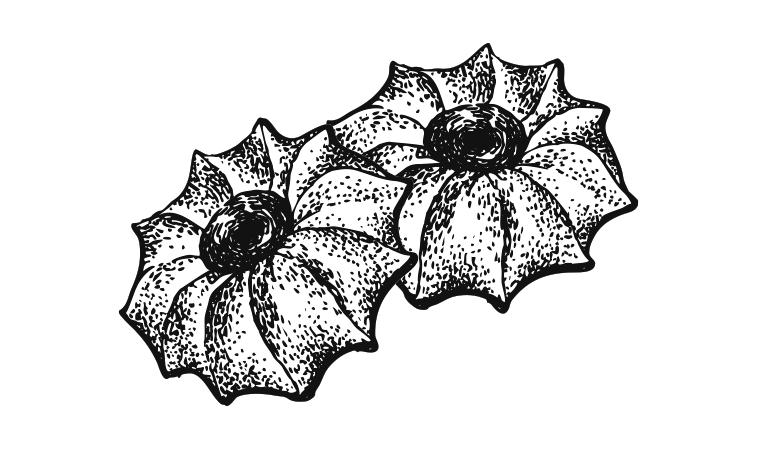Water activity in confectionery goods

The shelf-life of a product depends on numerous factors. One of them is water activity. If it is too high, microorganisms develop and the food simply spoils. That is why it is important to choose such confectionery components that guarantee the safety and stability of baked goods.
Nobody likes to waste food or receive complaints from dissatisfied customers. Pastries or cakes that were prepared with a long shelf-life maintain their high quality when their water activity is at a controlled level. What does it mean? Water activity impacts the microbiological durability of products. It is very important then, as the freshness of food depends on it. Higher water activity promotes faster microorganism growth and makes confectionery products go moldy, for example. Lower water activity slows this process down. If, for example, a low-activity filling is used to layer a cake, there is a higher certainty that the cake will stay fresh longer.
Water activity is the ratio of the water vapor pressure over the surface of a solution to the pressure over the surface of chemically pure water at the same atmospheric pressure and temperature. For distilled water, it is exactly 1. As the concentration of soluble compounds increases, the water activity drops to less than 1. To put it simply: water activity "measures" the amount of free, unbound water molecules. Water activity depends on the water content of the product, but it is not equal to it, because it is mainly influenced by the composition of the product – e.g. the sugar content in the filling or the fibre content in the mix used for baking.
Most microorganisms can grow in environments in which the water activity ranges from a minimum of 0.60 to 0.95 (depending on the type of microorganism), with an optimal value of 0.99. Low water activity slows or stops microorganism growth but it doesn't kill them. If the activity is raised locally, for example because of a water droplet, the microorganisms will immediately start to develop. Then mold can occur, for example.
In bakery products in which the water activity of the filling and the outer shell are different, e.g. the dough, water migration can happen. During storage, the water in the filling penetrates into the dough, resulting in the filling drying out and the flour part changing its texture, losing its crumbliness or crispiness. This way, the sensory quality of the product may decrease and it may even spoil. For example, in the case of using fillings in products with very low water activity, such as wafers or some types of shortbread cookies, water molecules may migrate. Then, the filling dries out and becomes "rubbery", and the pastry becomes soggy. One way of getting rid of this problem is to mix the filling with vegetable or animal fat.
Lauretta confectionery fillings are characterized by relatively low water activity, thanks to which they do not dampen the pastry products. This assures good quality and long shelf-life. The water activity of smooth fruit fillings is 0.86–0.87, of fruit fillings with fruit pieces is 0.95–0.98, and of cream fillings is 0.92. The water activity of Kandy candied fruit is 0.57–0.65. Such parameters guarantee safety and good taste.
Author: Dr inż. Dorota Czerwińska
Faculty of Human Nutrition
Institute of Human Nutrition Sciences
Warsaw University of Life Sciences
Editing and proofreading: Ewa Socik i Dariusz Socik
COPYRIGHT NOTICE
All rights reserved.
All contents published in this article are under legal protection of the
regulation stated in Copyright and Related Rights Act of 4th of February
1994 (consolidated text published in Journal of Acts of 2018, item 1191).
Without author’s permission it is forbidden to replicate, copy, reprint, keep
or recycle them, using electronic devices or means, both in whole or in part.
It is also forbidden to further diffuse or disseminate contents due to the
Article 25 (1) Point (1) Letter (b) of Copyright and Related Rights Act
of 4th of February 1994.





